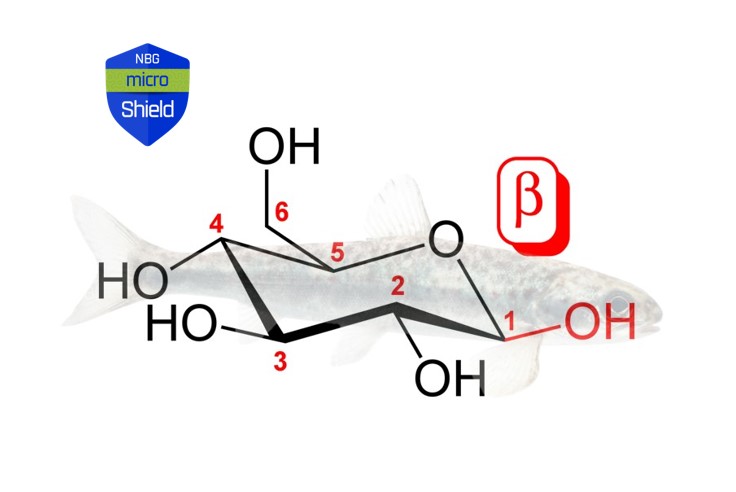Yeast Extracts, B-Glucans and the development of fish immunity

Dear colleagues,
This week we have chosen a review of B-Glucans and their effects on fish immunity and mechanism of action.
It is well known that the use of purified Beta-Glucans from the yeast wall boosts the immune system of animals and is especially useful in fish nutrition, where sometimes vaccines do not show sufficient potency. It is also good to keep in mind that the more purified the better, because we will release more active links in the molecule.
Regarding the mechanism of action, although it is not totally clear it seems that after oral administration, the β-glucans pass slowly in the first sections of the intestine and are trapped by the macrophage receptors present in the intestinal wall, activating them to produce bactericidal compounds such as lysozyme, reactive oxygen radicals and N-oxides. Subsequently, the cells begin to produce various cytokines, which activate the surrounding phagocytes and leukocytes, responsible for inducing specific immunity that is distributed throughout the body.
In addition, certain studies show that they are able to promote the formation of Th1 lymphocytes to the detriment of Th2 cells reducing the risks of autoimmune responses or allergies, so it is possible that we can increase resistance to allergens from certain proteins from plant origin.
In this article we will see a summary of the mode of action and effects of B-Glucans, including a new reported effect that could explain the effects of B-Glucans in the medium term, we are talking about the phenomenon of “trained immunity”.
Just to finish, here are a few tips to achieve a short- and medium-term action against an acute pathogenic outbreak that is already using NBG MicroShield:
- Use Beta-(1,3/1,6)-Glucans for example from yeast, another type may even have anti-nutritional effects.
- Use purified sources of B-glucans because as more purified more free links and the more activity it will have.
- Use fast acting natural antimicrobials such as protected organic acids or phytogenic extracts that will compensate the period that B-Glucans need to activate the immune system.
- Because B-Glucans are good Immunostimulants and the activation of the innate immune system produces reactive oxygen radicals and other oxidative molecules, I also recommend the use of natural antioxidants.
In a future article we will show how to achieve long-term action against a pathogenic outbreak using another well-known yeast immunomodulator product such as nucleotides and how to evaluate the quality of the product.
Enjoy this article.

